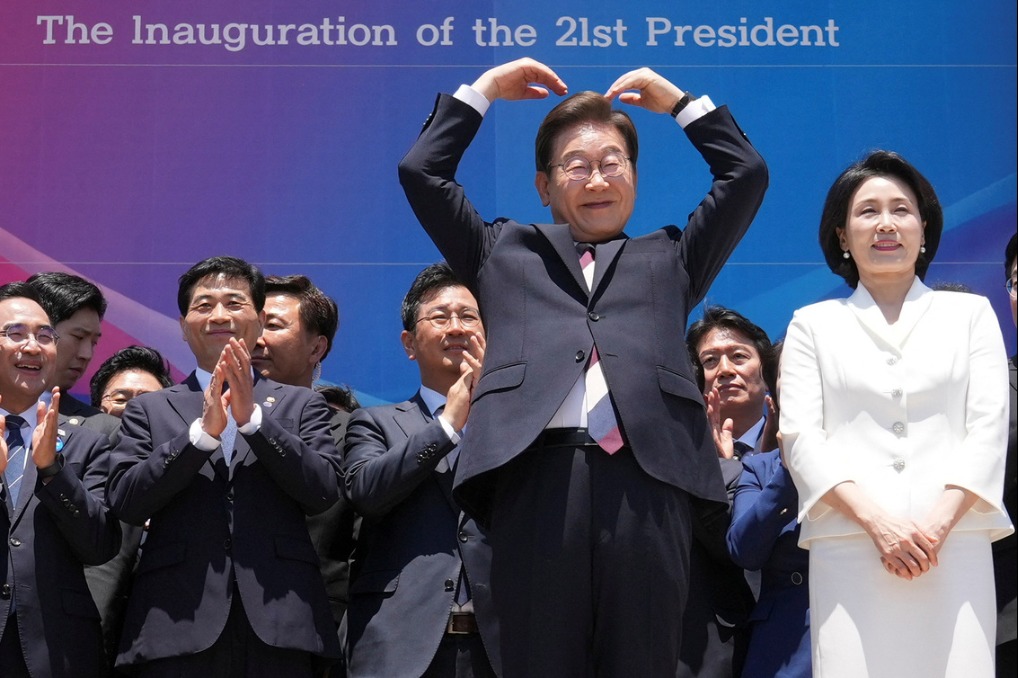APEC to focus on development


Leaders of the Asia-Pacific Economic Cooperation member economies will gather in Lima, Peru, this week, exploring concrete opportunities for advancing inclusive and sustainable development across the Asia-Pacific region.
As the gathering comes at a critical juncture marked by rising global fragmentation and protectionism, experts said APEC economies are expected to voice a collective call for economic and trade progress by bolstering regional cooperation.
China, as the world's second-largest economy and a major developing country, is being looked upon to contribute significantly to the deepening of APEC cooperation with initiatives that account for the shared interests of regional economies, they said.
Established in 1989 as a regional economic forum to leverage the growing interdependence of the Asia-Pacific, APEC aims to create greater prosperity for the people of the region by promoting growth and accelerating regional economic integration.
Under the theme of "Empower, Include, Grow", this year's APEC, with Peru as the host, focuses on trade and investment for inclusive and interconnected growth, innovation and digitalization for transition to the formal and global economy, and sustainable growth for resilient development.
Liu Chenyang, director of the APEC Study Center of Nankai University in North China's Tianjin, said the theme reflects the aspiration of most member economies to stay true to the forum's original mission, particularly amid rising geopolitical tensions that pressure certain members to take sides or join bloc confrontations.
"Regional mechanisms like APEC are needed now more than ever to bring together member economies that are highly complementary in terms of industrial and supply chains, to discuss ways to promote prosperity and well-being across the Asia-Pacific region," Liu said.
Consisting of 21 member economies including both developed and developing ones, APEC accounts for approximately 38 percent of the world's population, 60 percent of the world's total GDP and 47 percent of the world's trade.
Muhammad Habib, a researcher at the Department of International Relations of the Centre for Strategic and International Studies in Indonesia, said the fact that a large number of APEC member economies still uphold open economy principles cannot be neglected.
"One reason is because the Asia-Pacific region is a deeply interconnected economy. There are some members specializing in raw materials, some others are manufacturing powerhouses, some members focus on the financial aspect while the rest advances technology and innovation," Habib said.
To date, APEC is treated as the most inclusive platform where economic liberalization goes beyond political differences, he added.
Despite a sluggish world economy buffeted by conflicts and growing geopolitical rivalries, the Asia-Pacific region still stands out as one of the most dynamic regions in the global economy. According to the International Monetary Fund's October economic outlook report, the region is expected to grow by 4.6 percent in 2024, continuing to serve as the world's growth engine.
Wang Bo, dean of the School of International Development and Cooperation at the Beijing-based University of International Business and Economics, said that after more than 30 years of development, APEC economies have built a highly interdependent network of cooperation and dialogue.
"The mechanism plays an irreplaceable role in mitigating the impact of geopolitical fragmentation and fostering political mutual trust among economies," he said.
Rosario Santa Gadea, visiting scholar at the Fudan Development Institute of Fudan University in Shanghai, said it is highly desirable that APEC leaders make a strong statement in favor of avoiding protectionism, promoting inclusive growth and supporting multilateral organizations.
"It is important to note that, after two years of no consensus in APEC ministerial declarations, 10 ministerial declarations have been already approved this year by consensus, covering topics such as energy, finance, trade, women, and tourism, among others," she said.
Gadea, also former director of the Center for China and Asia-Pacific Studies at the University of the Pacific in Lima, highlighted China's critical role in driving Asia-Pacific's economic growth due to its importance in the global economy.
"China has become a major engine of the world economy, having contributed in recent years to around one third of all growth worldwide, according to the World Bank. So, that is its role at the global level as well as in the Asia-Pacific region," she said.
Noting that the Chinese-invested Port of Chancay in Peru will be inaugurated in November, she said it is expected to transform Peru into a trade hub between South America and China by establishing a direct maritime route between Chancay and Shanghai.
"This connection between China and Peru will enhance connectivity between both sides of the Asia-Pacific region, reducing logistic costs and making a positive impact on economic growth," she added.
Liu, from Nankai University, said that against the headwinds of anti-globalization and trade protectionism, China is increasingly dedicated to promoting regional cooperation in pursuit of maximizing interests among APEC members.
"Unlike some members that pursue topics for self-interest, China approaches Asia-Pacific regional cooperation with a broader perspective, aiming to make the mechanism more dynamic and effective to deepen regional cooperation," he said.
APEC was the first regional economic cooperation organization that China joined after its reform and opening-up began in the late 1970s. Since joining in 1991, China has been a staunch supporter and active promoter of economic cooperation in the Asia-Pacific, driving regional development through its own growth.
Over the years, Chinese proposals such as building an Asia-Pacific community with a shared future and the APEC Connectivity Blueprint, have resonated strongly with member economies.
Last year in San Francisco, President Xi Jinping told a gathering of business leaders that China will work with all in the Asia-Pacific to advance and implement the initiatives such as the Belt and Road Initiative and the Global Development Initiative, and build an open, inclusive, clean and beautiful world of lasting peace, universal security and shared prosperity.
Habib, the Indonesian expert, said that China's initiatives have done a great job to complement the APEC's agenda at two levels.
"At the national level, China's BRI has helped APEC member economies have better infrastructure and industrial skill, thus allowing them to seize benefit from open trade and global investment flows while enabling them to refine their trade facilitation. At the international level, China's GDI creates favorable environment and strengthens capacity of developing economies to amplify APEC's agenda," he said.
Since APEC member economies agreed to launch the Free Trade Area of the Asia-Pacific process at the leaders' meeting held in Beijing in 2014, China has steadily deepened trade and investment cooperation with regional economies, contributing to an open Asia-Pacific economy.
The landmark Regional Comprehensive Economic Partnership agreement, which came into force on Jan 1, 2022, is a fine example of such efforts. This agreement, encompassing many APEC members, aims to gradually eliminate tariffs on over 90 percent of goods traded among member economies.
Wang, of the UIBE, said that China can share its experiences related to the RCEP with like-minded APEC economies to further regional trade and investment facilitation.
"Such efforts could help to counter attempts by certain members to politicize economic and trade cooperation, practice trade protectionism, and disrupt the global industry and supply chain," he said.































